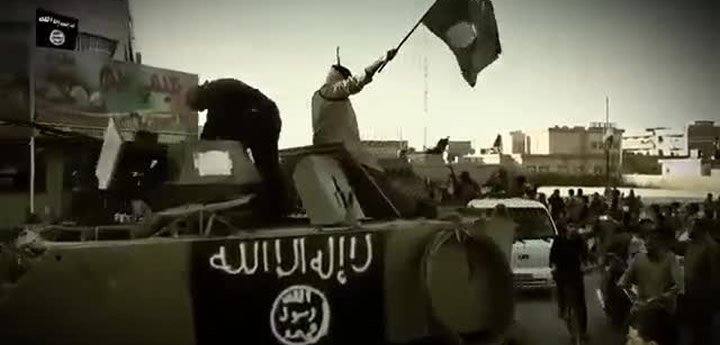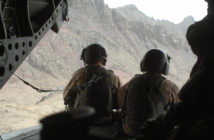The US and five Arab states have launched the first air strikes against Islamic State (IS) targets within Syria.
Pentagon Press Secretary Navy Adm. John Kirby said in a statement that the overnight strikes were “a mix of fighter and bomber aircraft and Tomahawk Land Attack missiles”. They were part of the US military strategy to “degrade and ultimately destroy” IS, and follow the 190 air strikes launched in Iraq since August.
Arab countries Bahrain, Jordan, Qatar, Saudi Arabia and the United Arab Emirates either “participated in or supported” the strikes, according to US Central Command (Centcom).
Six of the fourteen strikes focused on Raqqa, the de-facto capital of the Islamic State, with the other eight targeting other IS locations including Deir al-Zour, Hassakeh, Abu Kamal, Tabgha, Ein Essa, and Tall al-Abyad on the Turkish border.
Before the strikes were officially announced by the Pentagon, users of social media in Raqqa reported huge explosions in the city, which they presumed may have been the start of US air strikes.
Raqqa resident Abdulkader Hariri tweeted:
“Huge explosions shook the city in what might be the beginning of US airstrikes on ISIS HQs in Raqqa
“The airstrikes 5/6 concentrated near the ‘governorate building’ ISIS’s main HQ. Meanwhile, sounds of warplanes can be heard clearly”
The US Navy has released footage of the launch of Tomahwak land attack missiles from the USS Philippine Sea, which struck positions within Syria:
Alleged footage of the impacts of the strikes on Raqqa has also emerged online:
The strikes also targeted locations held by “Khorasan”, a network of al-Qaeda veterans in Idlib province, west of Aleppa, who the US claims are plotting imminent attacks against the West, and Jabhat al-Nusra, another al-Qaeda affiliate that has long worked with more moderate Syrian fighters to attack the regime.
The Syrian government said that they were informed of the air strikes before they took place, but had not consented to their use on its territory.
The US has ruled out working alongside Syrian President Bashar al-Assad in destroying IS targets, and has previously said that he had no legitimacy to rule after using chemical weapons on his own people.
The air strikes will have enraged many IS militants that saw Raqqa as a safe haven, but IS said that they were expecting them and had already dispersed a number of their key assets. However, the strikes have shown that despite its strong rhetoric, IS does not have the capability to take on US air power.
According to the London-based Syrian Observatory for Human Rights, the strikes killed more than 20 IS militants in Raqqa, as well as 30 al-Qaeda-linked militants and eleven civilians, including four children, in Aleppo.
Syrian Opposition Coalition president Hadi al-Bahra welcomed the strikes but said that they were not enough to defeat extremism for good, which needs “moderate, inclusive Syrian governance” that prevents the resurgence of extremism. Bahra is due to address the UN on Wednesday to ask for further military assistance in fighting IS in Aleppo and the Assad regime in Damascus.




